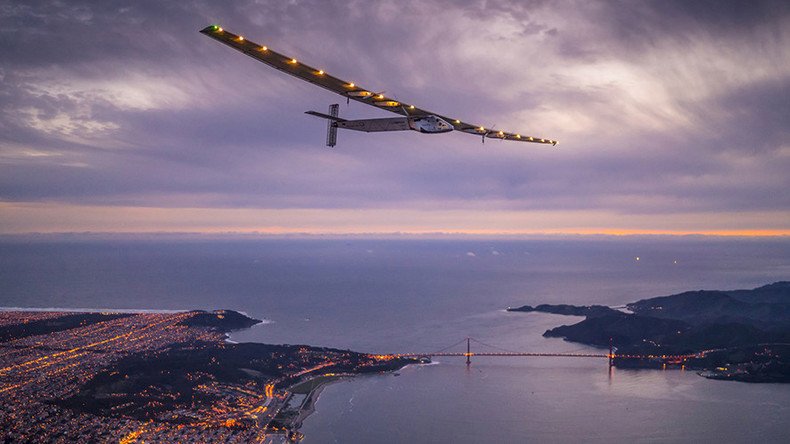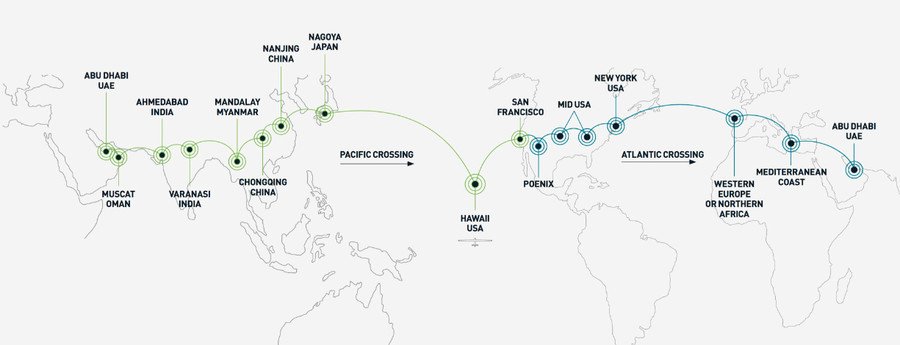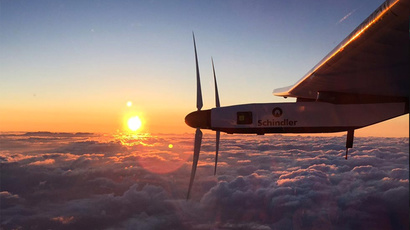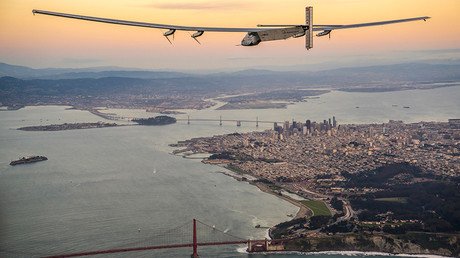Ambitious solar plane begins US leg of round-the-world flight

The first airplane powered entirely by solar energy has begun crossing the continental US as part of its ambitious flight around the globe. Solar Impulse 2 took off from California and is expected in Phoenix, Arizona on Monday evening.
Solar Impulse began its journey in March 2015, departing from the United Arab Emirates and stopping in Oman, India, Myanmar, China and Japan.

Two Swiss pilots, Bertrand Piccard and Andre Borschberg, have been taking turns in the cockpit of SI2 since the plane took off from Abu Dhabi. Borschberg was in the cockpit on Monday, as the plane took off from Moffett Airfield in Mountain View, California.
The experimental aircraft has a 236-foot (72-meter) wingspan – larger than a Boeing 747 – and is bristling with 17,248 solar cells that power four electric motors. The plane weighs more than 2.5 tons (2,300 kilos), or about as much as an SUV. Solar energy also charges the on-board batteries, enabling the plane to fly at night.
Borschberg was able push the aircraft’s limits last June, during the Pacific crossing that took 117 hours and 52 minutes of flight time between Nagoya, Japan and Honolulu, Hawaii.
READ MORE: Solar-powered plane sets solo flight world record
However, the batteries suffered some heat damage in the process, requiring repairs, grounding the plane for over nine months. After the repairs were complete, Piccard flew the Solar Impulse to San Francisco last month.
The flight from Mountain View to Phoenix is the 10th leg of the trip around the world, and the first across the continental US. The pilots plan two more stops before reaching New York, where they will prepare for the Atlantic crossing to Europe or North Africa.
Solar Impulse 2 can reach the maximum altitude of 28,000 feet (8.5 km), according to the project. With the average airspeed of only 40 knots (75 kilometers per hour), it is not very fast. However, the data sheet for the aircraft lists the fuel consumption as “zero.”
The trip is sponsored by the Abu Dhabi government, Omega, Google, and Moet Hennessy, among others.














